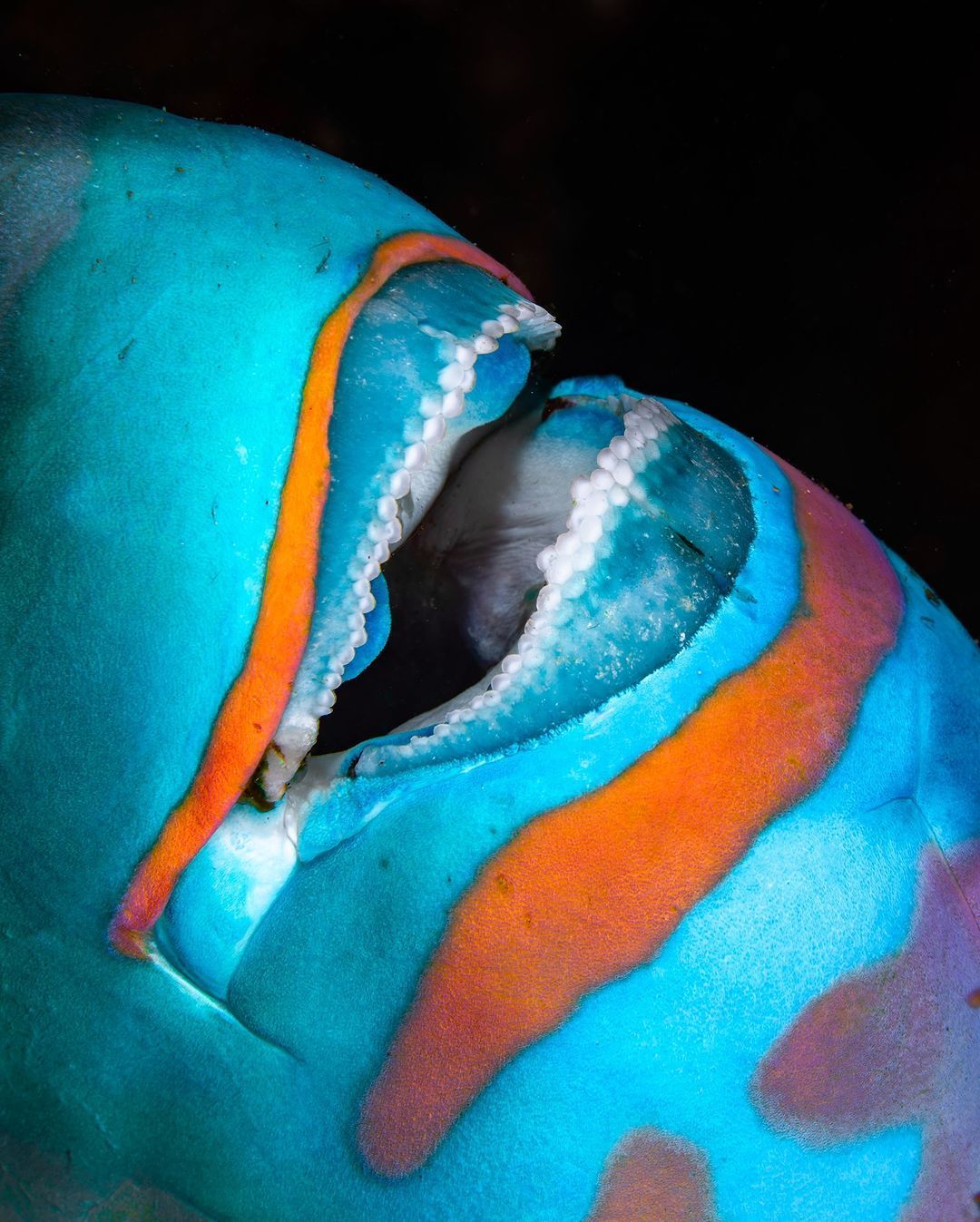
photo © @ollieclarkphotos
The pearly whites of a parrotfish almost look harmless in this close-up, but parrotfish constantly chomp on coral with these incredibly strong teeth.
How can they do that without wearing down? A 2018 study astonished researchers, revealing that parrotfish teeth are a woven microstructure that “researchers had never seen before, with the crystals oriented in interwoven bundles, which form a chainmail pattern.” As the lead researcher Dr. Pupa Gilbert said “Parrotfish teeth are the coolest biominerals of all. They are the stiffest, among the hardest, and the most resistant to fracture and to abrasion ever measured.” In fact, “the structure could serve as a blueprint for designing ultra-durable synthetic materials … that could be useful for mechanical components in electronics, and in other devices that undergo repetitive movement, abrasion, and contact stress.”
And all that munching on coral builds beaches — much of what parrotfish eat comes out the other end as sand, a LOT of sand. ” In a year, one large parrotfish can produce 1,000 pounds (450 kg) of sand, the weight of a baby grand piano.
Parrotfishes’ grazing is an integral part of coral ecosystems and part of the ocean’s circle of life, as the Smithosonian’s Ashley Gallagher notes:
While parrotfish eat a lot of coral, they also eat the algae that grow on top of coral reefs. This cleaning function is important to the reefs’ ecosystem survival. When the fish eat the algae that compete with the coral polyps, the coral is able to grow and is more resilient in the face of local stressors (like pollution or warming). In areas where overfishing has wiped out parrotfish populations, coral reef ecosystems are not as productive, and cannot sustain as much diverse life.
